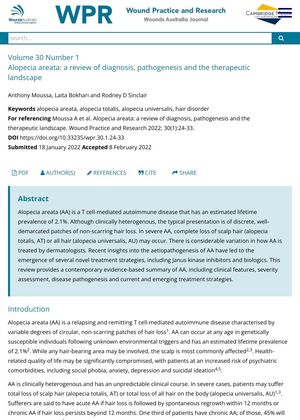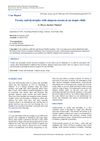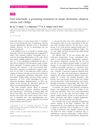Alopecia Areata: A Review of Diagnosis, Pathogenesis, and the Therapeutic Landscape
March 2022
in “
Wound practice & research
”

TLDR New treatments for alopecia areata show promise, but standardized guidelines are needed.
Alopecia Areata (AA) is an autoimmune disease affecting 2.1% of the population, causing non-scarring hair loss. It can lead to complete loss of scalp hair (alopecia totalis, AT) or all body hair (alopecia universalis, AU) in severe cases. The disease is linked to the collapse of hair follicle immune privilege. Current treatments aim to halt disease progression and reverse hair loss, with emerging strategies including Janus kinase inhibitors and biologics. Genetic studies have identified 14 genomic loci related to AA, but no single gene has been identified as the cause. Management of AA varies significantly, with treatments ranging from observation and reassurance to topical treatments, systemic corticosteroids, and newer modalities like platelet-rich plasma (PRP). Janus kinase (JAK) inhibitors have shown promise for moderate to severe AA, but are associated with adverse events such as infection, nausea, and increased risk of malignancy. The authors emphasize the need for standardized management guidelines and severity assessment tools.

